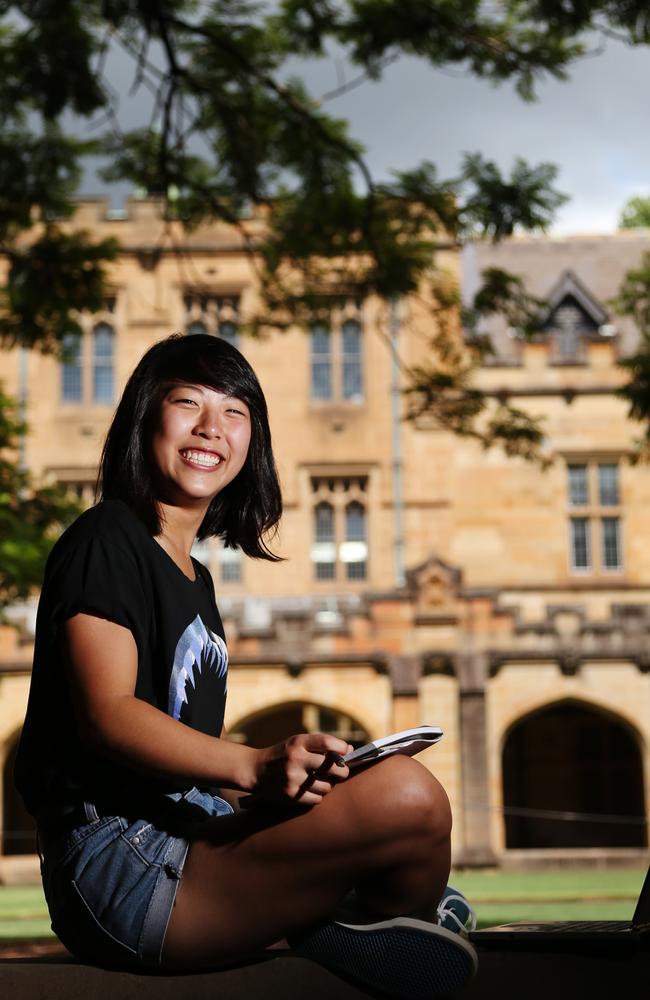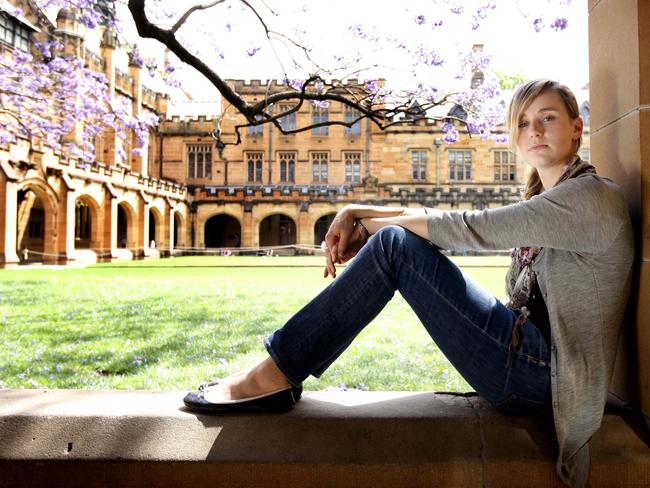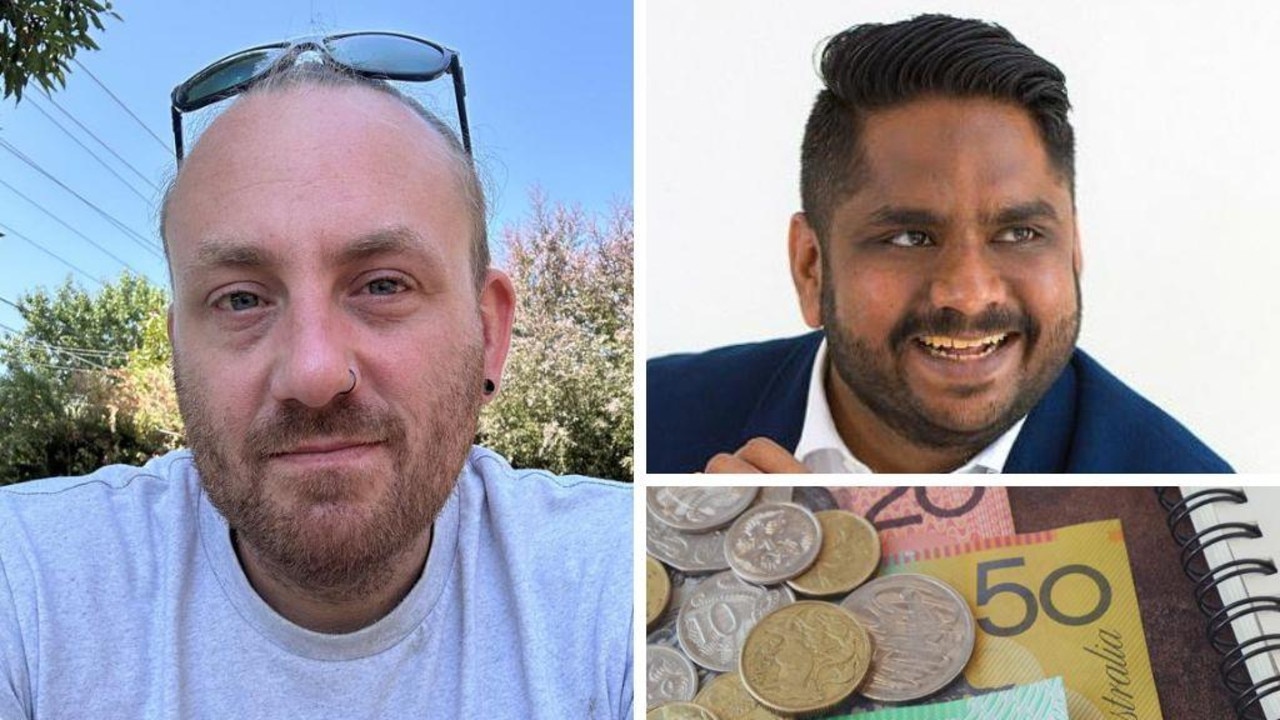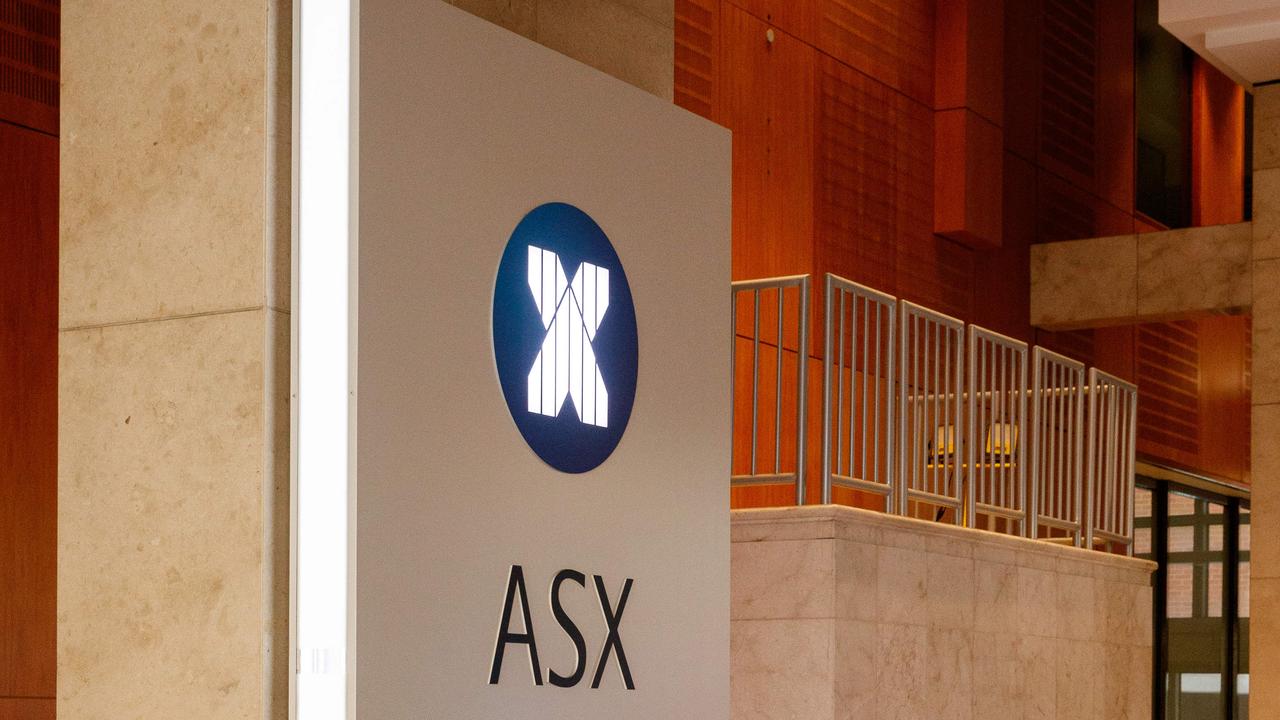Graduate Careers Australia figures show men outnumber women in higher paying engineering degrees
MOST of us want to strike it rich one day, but have you chosen the wrong degree to get there? New figures reveal which ones are likely to pay the most.
YOUNG women looking to earn as much as their male counterparts should steer clear of humanities degrees and consider studying engineering, according to a new study.
Based on a 2013 survey conducted by Graduate Careers Australia’s (GCA), the study found the starting salaries of male university graduates under 25 were on average 9.4 per cent higher than females.
Scroll down to see the differences in pay for male and female graduates
However, after the different fields of undergraduate education studied by young people were taken into account, this gender wage gap narrowed to an average of 4.7 per cent.
The figures suggest more males enrol in fields of education that typically earn higher salaries such as engineering, the study’s principal author Edwina Lindsay said.

On the flip side, females outnumbered males when it came to humanities, which was ranked at the lower end of the salary distribution. Actor Emma Watson is one of the lucky few who is likely to make millions with her English literature degree from Brown University.
In other words, women would earn more money if they picked the traditionally ‘male’ degrees.
MORE: McCrindle Research finds psychology is the most overrated degree
Ms Lindsay said the study recommended that female students be given more information about career choices and be encouraged to consider traditionally male occupations.
“If females decide to enrol in these stem subjects — science, technology, engineering and mathematics — then the aggregate 9.4 per cent gap will be reduced for future generations,” she said.

Here are the differences in graduates’ average annual starting salaries by detailed occupation and gender, 2013 ($000’s)
Accountants: Male $50.1, Female $48.4, Difference $1.7
Registered Nurses: Male $54.6, Female $50.9, Difference $3.7
Primary School Teachers: Male $57.7, Female $54.5, Difference $3.2
Civil Engineering Professionals: Male $63.4, Female $62.4, Difference $1.0
Secondary School Teachers: Male $57.1, Female $55.6, Difference $1.4
Physiotherapists: Male $56.3, Female $55.7, Difference $0.6
Pharmacists: Male $40.3, Female $40.6, Difference $-0.3
Solicitors: Male $60.0, Female $58.6, Difference $1.4
Industrial, Mechanical and Engineers: Male $68.3, Female $71.0, Difference $-2.7
Generalist Medical Practitioners: Male $60.8, Female $60.7, Difference $0.1,
MORE: Inspiring commencement speeches for the class of 2014
Sales Assistants (General): Male $37.4, Female $36.5, Difference $0.9
Other Engineering Professionals: Male $63.6, Female $59.0, Difference $4.6
Software and Applications Programmers: Male $57.9, Female $54.5, Difference $3.4
Management and Organisation Analysts: Male $62.3, Female $57.6, Difference $4.7
Auditors, Secretaries and Corporate Treasurers: Male $51.4, Female $51.1 Difference $0.3
Human Resource Professionals: Male $49.3, Female $51.8, Difference $-2.5
Court and Legal Clerks: Male $54.7, Female $55.2, Difference $-0.5
Medical Imaging Professionals: Male $52.9 Female $53.0, Difference $-0.1
Public Relations Professionals: Male $52.3, Female $46.3, Difference $6.0
Graphic and Web Designers, and Illustrators: $Male $41.7, Female $40.5, Difference $1.2
Medical Technicians: Male $42.4, Female $43.7, Difference $-1.3
Journalists and Other Writers: Male $44.1, Female $41.2, Difference $2.9

Of the 8185 responses used that spanned 23 fields of higher education, 11.6 per cent of females studied humanities compared to 5.7 per cent of males.
Engineering degrees were represented by 24.6 per cent of men, to only 3.7 per cent of women.
The broader Australian labour market gender wage gap favours men by 17.1 per cent, according to the latest Australian Bureau of Statistics (ABS) data.
MORE: Women in STEM industries: Time to fix the pipeline
But that data looks only at the broad Australian labour market, which includes significant differentiating factors including age, region of work and breaks in employment for family responsibilities.
“This figure is not controlling for a subset of graduates who have the same qualifications, the same work experience and are of the same age,” Ms Lindsay said.
The study, called An Analysis of the Gender Wage Gap in the Australian Graduate Labour Market, was the result of responses from Australian resident bachelor's degree graduates younger 25 and in their first full-time job.

What university graduates studied in 2013 (percentage)
Engineering 24.6 Male 3.7 Female
Economics & Business 21.6 Male 18.8 Female
Accounting 9.4 Male 6.6 Female
Paramedical Studies 6.3 Male 21.0 Female
Computer Sciences 6.0 Male 0.8 Female
Humanities 5.7 Male 11.6 Female
Architecture & Building 4.0 Male 2.1 Female
Education 3.5 Male 10.9 Female
Biological Sciences 3.1 Male 4.4 Female
Law 2.4 Male 3.4 Female
Medicine 2.3 Male 2.0 Female
Pharmacy 2.2 Male 3.0 Female
Art & Design 2.0 Male 2.9 Female
Earth Sciences 1.4 Male 0.4 Female
Physical Sciences 1.2 Male 0.4 Female
Agricultural Science 1.1 Male 0.9 Female
Psychology 1.1 Male 3.3 Female
Mathematics 1.0 Male 0.3 Female
Social Sciences 0.6 Male 1.3 Female
Dentistry 0.2 Male 0.4 Female
Optometry 0.2 Male 0.2 Female
Social Work 0.2 Male 1.3 Female
Veterinary Science 0.0 Male 0.6 Female
From 8185 respondents (3103 men and 5082 women) (Source: Graduate Careers Australia)
What did you get out of your university degree? Leave a comment below or continue the conversation on Twitter @newscomauHQ



